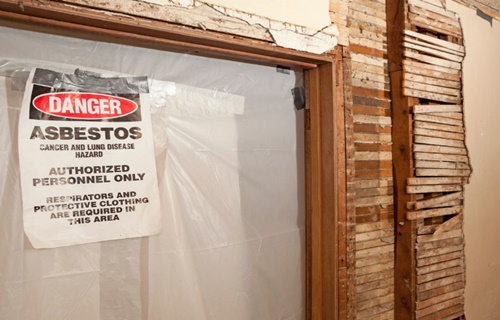Asbestos: Know When to Test and Take Action

Asbestos had many uses in the 20th century, peaking in the early to mid-1970s and steadily incorporated into building materials long after. It was considered a "miracle material" and favored by the building industry because it was cheap and abundant on the markets, and its fibers strengthened construction products, increasing their durability. As a result, a vast majority of the houses in the U.S. were built with materials containing asbestos. It is why thousands of households face a high probability of living with the dangerous material today.
Asbestos has a rightfully lousy reputation due to its toxic fibers that cause severe health problems when inhaled or ingested. Asbestos exposure is the culprit of debilitating diseases that develop only after decades from initially inhaling or ingesting the microscopic fibers. With most buildings built before the 1980s - maybe even some constructed during later periods- containing some form of the dangerous mineral, our homes may be the source of potential asbestos exposure.
Asbestos awareness is crucial to keeping the family's health and well-being. But homeowners can only manage risks they know about, and identifying asbestos in the house is the first important step.
Does My Home Contain Asbestos?
With hundreds of thousands of buildings, including residential homes, being constructed using asbestos before the knowledge about its dangers spread, there's a good chance that the house you live in has asbestos.
Whether you have owned the house for years or have just purchased it, it's always wise to inspect and test the building professionally. It's the only way to ensure that the weird-looking stuff you spot in your attic is asbestos and not some other fibrous insulation. Hiring a professional will also ensure that no hidden dangers are lurking in the drywall, ceilings, or flooring in your home.
A tricky fact about asbestos is that not all forms are to cause alarm. If the substance is in good shape or the older fibrous materials are not disturbed, they don't represent an immediate health risk. But if your home has crocidolite and amosite asbestos, everyone is in danger, and you should have it removed. Chrysotile asbestos, on the other hand, presents a lower risk of asbestos exposure, and if it is in a remote, not-so-frequented area of the house, there may not be cause for alarm. Regardless, given that no exposure is safe, you should speak with a professional if you suspect any asbestos in your home.
When Should I Take Action?
As mentioned, certain types of asbestos are considered more dangerous than others, and it's impossible to identify them only by looking. It should be evaluated if you believe any asbestos is inside your home.
If the suspected asbestos or asbestos-containing material shows signs of wear or tear, it's important not to disturb it. Asbestos becomes a health risk when its microscopic fibers become airborne or may potentially become airborne. Then, it would be best to have it abated immediately with a certified contractor.
Asbestos is a quiet and hidden danger in your home, and its presence in the house can be scary. Even so, there's no reason to panic. When no other alternatives are plausible for whatever reasons, you can take the initiative and action in your own hands by following efficient procedures from our DIY asbestos removal guide and ensure your safety and proper DIY asbestos removal while handling asbestos products carefully.
